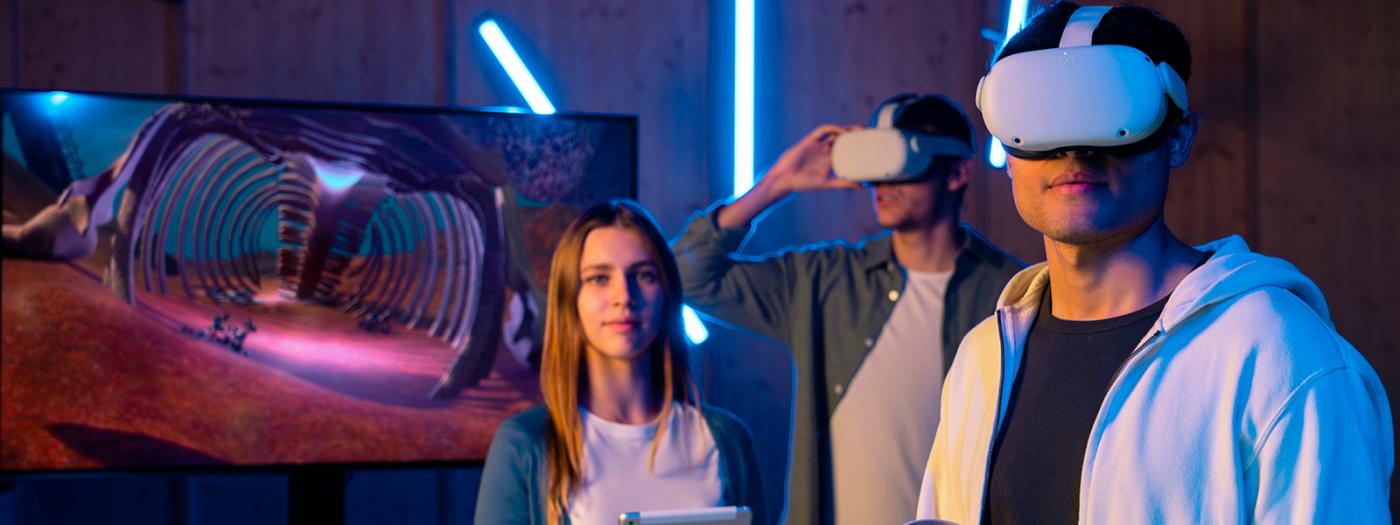Whether or not, each good story needs to be constructed using a lot of techniques and rules to be efficient.
The subject aims to provide knowledge and tools for detecting and identifying the models of underlying dramatic structures in all narratives, with a particular focus on the audiovisual media.
In this subject, the learner will be made aware of the basis of narrative and script, analysing dramaturgy works and performing practices such as the basic script for audiovisuals.
The course needs previous knowledge of audio-visual language.
The main objective of the subject is to provide the student with the fundamental knowledge about traditional and audiovisual dramatic structures, in order to successfully develop the creation of basic audiovisual contents. To carry out this objective, the subject is focused on: Understand and recognize traditional narratives. Perform reading the dramatic work from parameters that allow the correct comprehension and interpretation of the texts. Analyze and understand the elements necessary for the construction of a story. Know the tools useful for creating content and stories. Acquire knowledge in stories about the different audiovisual media. Learn basic notions for the construction of effective narratives. Know how to communicate effectively. Demonstrate autonomous learning ability and self-sufficiency to achieve efficient work. The internal keys of the text and its operation Cleaning Highlights the unknown words Use the Valencian forms Translate while writing Copy the text Allows the use of the text anonymously to improve the translation service. Concepts, notions and terminology of traditional narrative Characters and dramatic situations Plot and narrative structures: its elements, functions, relation and main characteristics Arguments and universal frames Methods and procedures of the processes of construction and analysis of audiovisual narratives Point of view and focus The narrator and the voice in the audiovisual story.
Preliminary questions
Emotions; starting point of stories
What's a script?
The character
Script structure
Narrative procedures
Script Errors
Present classes with front-end exposure of the contents.
Reading texts in class and out of class.
Analysis of audiovisual products in class and out of class.
Individual and team continuous evaluation exercises.
Works for projects with student involvement making decisions and solving problems.
Assistance, participation and attitude in classes.
Evaluation Continue (80%)
Questionnaires (20%)
Some scoring practices will be carried out during the class schedule. The lack of assistance in these exercises means suspending them with 0. These activities can be restored to the extraordinary call, provided that the semester is suspended. Otherwise, zero is half the rest of the notes.
Push off an exercise or don't give it, make this activity worth 0. These activities can be restored to the extraordinary call, provided that the semester is suspended. Otherwise, zero is half the rest of the notes.
Extraordinary call:
Students cannot submit to upload note if semesters are approved.
Suspended exercises during the semesters can be recovered from the end of the first quarter until 29 June 2020.
The note to be obtained from these will not be greater than 5.
These exercises will be recovered individually, either individually or groupally.
Assistance:
This subject has a margin of 25% of faults. Overcoming this means that all jobs that have been done must be delivered in a collective time again and individually. This work will have a maximum of 5.
As for the justification of errors, the current University regulations will apply.
Any narration can be constructed within the audiovisual sphere, including film, video, multimedia interactive and advertising, primarily.
Scripts are created for all types of productions in the audiovisual and Multimedia fields.
El libro del guión: Fundamentos de la escritura de guiones, Syd Field, Madrid, 1995, Plot ediciones (Screenplay: The Foundation of Screenwriting; y los otros textos de S. Field)
The Writer's Journey: Mythic Structure For Writers, Christopher Vogler, 2007, Michael Wiese Productions
El relato cinematográfico. Cine y narratología, André Gaudreault.;FrançoisJost Barcelona, 1995, Paidós
La narración en el cine de ficción, David Bordwell, Barcelona, 1996, Paidós
Guión Audiovisual, Fernando De Felipe, Barcelona, 2006, UOC
Narrativa audiovisual: televisiva, fílmica, radiofónica, hipermedia y publicitaria, Francisco García, Madrid, 2006, Laberinto
Estetica del cine. Espacio filmico, montaje, narracion, lenguaje, J. Aumont, A. Bergala, M. Marie, M. Vernet, Barcelona, 1985, Paidós
Adaptación, Fernando De Felipe; Iván Gómez, Barcelona, 2008, Trípodos
Libertad dirigida. Una gramática del análisis y diseño de videojuegos, Víctor Navarro Remesal, 2016, Shangrila textos aparte
El héroe de las mil caras. Psicoanálisis del mito; Joseph Campbell, 1959, Mèxico, Fondo de cultura económica
El guión. Sustancia, estructura, estilo y principios de la estructura de guiones, Robert McKee, Barcelona, 2002, Alba
Cómo convertir un guión en un guión excelente, Linda SEGER, 1991, Madrid, Rialp
